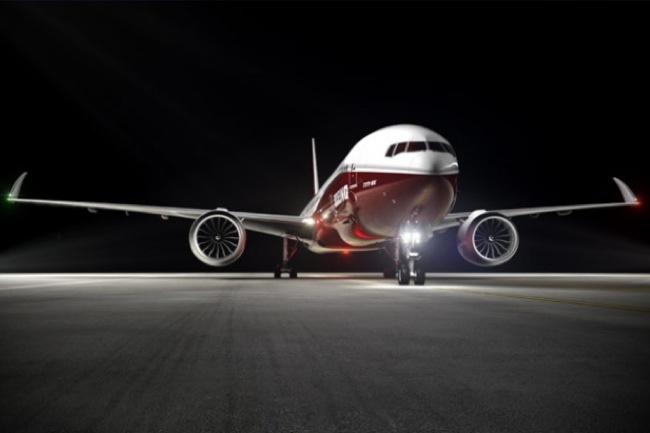
Over in Dubai this past weekend, Boeing finally unveiled its highly anticipated new airplane, the 777x. If you have read any of the business news surrounding the aircraft, then you know it sold like gangbusters – Boeing took in 259 orders for a plane that isn’t even scheduled to take flight until 2020. So, why are airlines (mainly ones based in the Gulf) flocking to this new jet? It’s the promise of cost-savings, thanks to new engine and wing technology.
The 777x isn’t a completely new plane, but the next evolution of the 777, one of Boeing’s best-selling models (if you’ve ever flown long-haul to Europe or Asia, you’ve most likely traveled in a 777). As airlines continue to cut costs, they are looking to more fuel-efficient planes, like Boeing’s 787 and Airbus’s upcoming A350. In addition, the 777x (dubbed the “mini jumbo”) is attractive because it has large capacity, flies far, is familiar to pilots, etc.
In order to make the 777x more efficient, Boeing is using a new engine from GE Aviation, called the GE9X, and longer composite wings based on the technology used in the 787. While longer wings can improve efficiency, it’s a problem for airports that can’t accommodate them (it’s one reason why many airports cannot handle the larger Airbus A380 double-decker). As a solution, the ends of the 777x’s wings will fold up when the plane is on the ground, shortening the wingspan by 20 feet.

Every airline in the world is looking to buy new planes that are more economical to fly (Gulf-based airlines, which are looking to become global juggernauts, depend on these large, long-haul planes to shuttle travelers between Asia, Europe, and the Americas), and plane makers from Boeing to Airbus, Bombardier to Embraer are working on designing more fuel-efficient models. Fuel is often cited as the main operational expense, and reduced costs equate more savings. However, don’t expect airlines to lower fares. Despite these more efficient airplanes, airlines will continue to charge its customers fees wherever they can.
(Via MIT Technology Review; images via Boeing)


